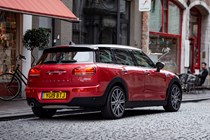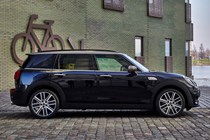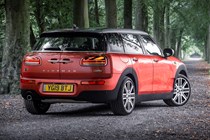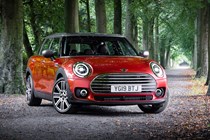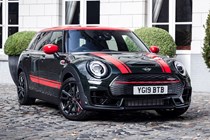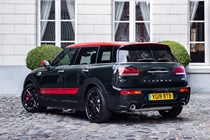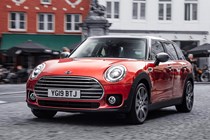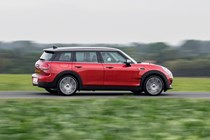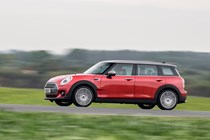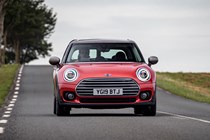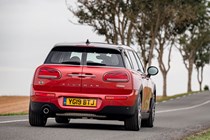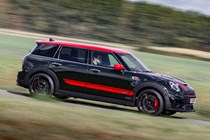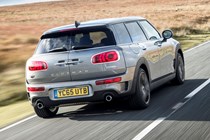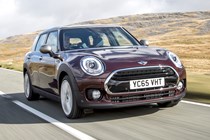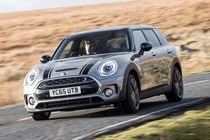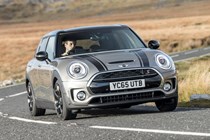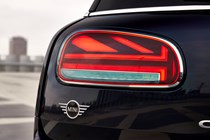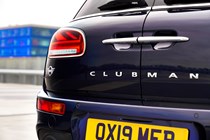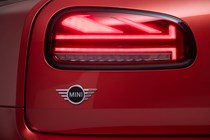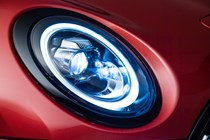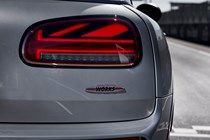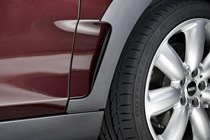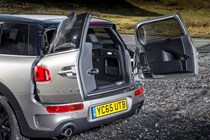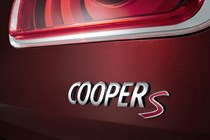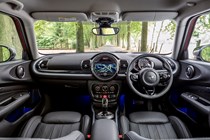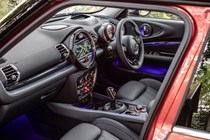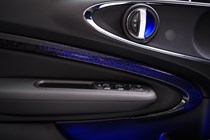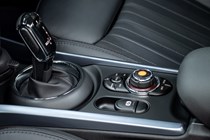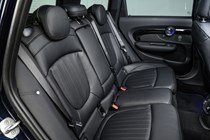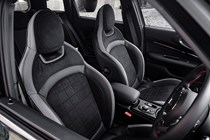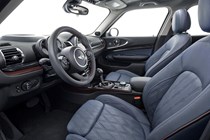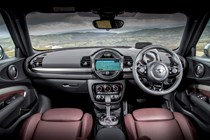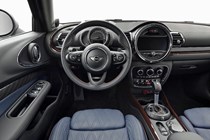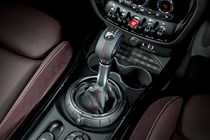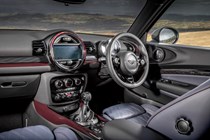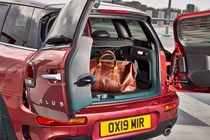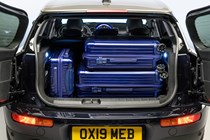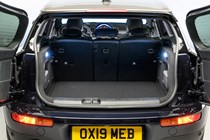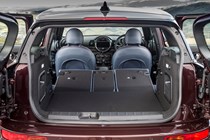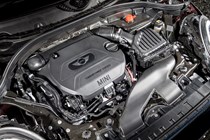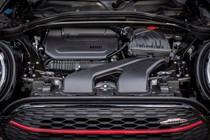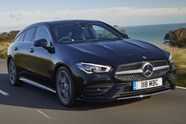MINI Clubman Estate (2015-2024) review
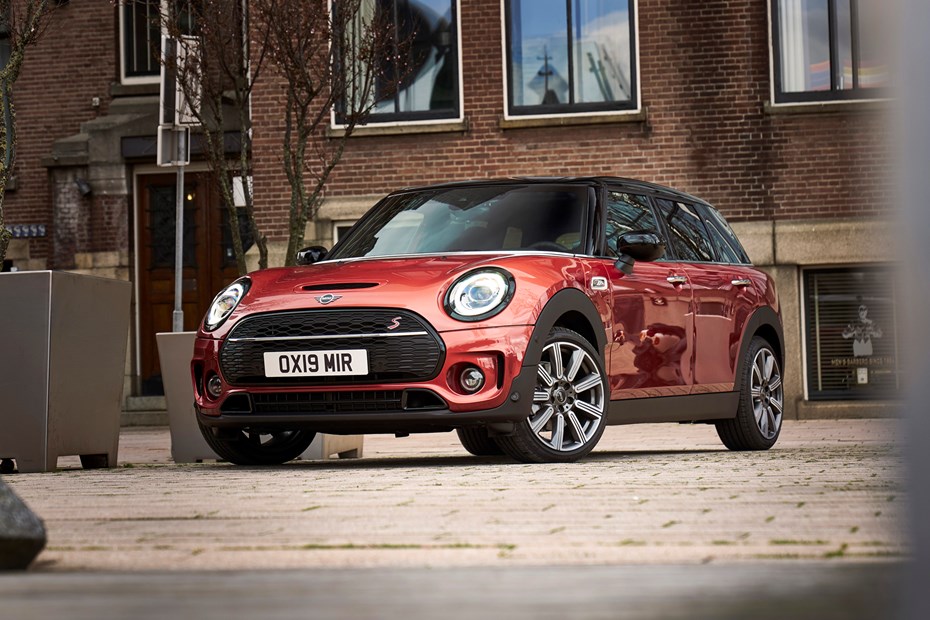
At a glance
| Price new | £19,435 - £39,960 |
|---|---|
| Used prices | £4,744 - £37,296 |
| Road tax cost | £0 - £305 |
| Insurance group | 12 - 40 |
Get an insurance quote with

|
|
| Fuel economy | 35.8 - 58.9 mpg |
| Range | 401 - 781 miles |
| Miles per pound | 5.2 - 7.5 |
| Number of doors | 5 - 6 |
| View full specs for a specific version | |
Available fuel types
Petrol
Diesel
Pros & cons
- Sharp, engaging handling is fun
- Quirky styling, unusual features
- Compact dimensions a bonus in cities
- Rival hatches offer more room
- Fastest JCW version feels heavy
- Patriotic touches feel overdone
MINI Clubman (15-24) rivals
Overview
Estates don’t come much smaller or weirder than the MINI Clubman. From some angles it looks to be little more than a longer version of the five-door MINI Hatch, but the more time you spend drinking in its unusual looks you realise it’s also wider, has a much longer roof and six doors.
Six? Yes, as a nod to the original 1960s estates based on the first Minis, access to the boot is via a pair of side-hinged doors, each with a tiny windscreen wiper.
In reality, you’re unlikely to confuse the Clubman for any other car on the road, yet to drive it feels reassuringly MINI-like.
In second-generation form, the Clubman’s styling sits atop a body that is practical – certainly in MINI terms, at least. Indeed, you’d need to step up to the Countryman SUV to get a bigger, more practical package from the brand.
Despite being owned by the German firm BMW, newer MINI models are loaded up with Union flag-inspired detailing. The most striking of these can be found in the Clubman’s taillights introduced as part of the 2019 facelift, which mimic a quarter of the flag in crisp-edged LEDs. There’s little doubting that they’re a divisive feature with many loving them while others find them naff. For those who fall into the latter camp, there’s no option to fit the previous simpler design.
Up front the headlamps have been revised so that the LED day-running lights form a complete, unbroken loop of illumination, doubling as flashing amber indicators. Inside there were fewer modifications, the dashboard feeling suitably upmarket and high quality, with a wide array of trim finishes and colours to make it feel a little more you.
Currently, the Clubman line-up is the most pared down it’s ever been. The diesel-engined Cooper D and Cooper SD are no more, while the All4 four-wheel drive versions have also been discontinued, except for the most expensive Clubman.
Petrol-powered Cooper and Cooper S models now form the core of the range. The former has a 136hp 1.5-litre engine, the latter a 178hp 2.0-litre powerplant. Both are available with a choice of manual and automatic transmissions. Each is then also available with a choice of three packages that alter the styling and equipment levels.
Topping the Clubman range is the 306hp John Cooper Works, or JCW for short. It looks suitably pumped-up and has the performance to rival the best hot hatchbacks – 0-62mph taking just 4.9 seconds, for instance.
Automatic transmission and four-wheel drive are standard here to make its pace as accessible as possible, but given its a small – but quick – estate, it’s always going to be a leftfield choice.
Direct rivals for the Clubman are all but non-existent. Skoda’s Fabia Estate is similar in size, far more practical, but nowhere near as upmarket, leaving the slightly larger Mercedes-Benz CLA Shooting Brake as another premium-priced, space-compromised wagon. Alternatively, you’re looking at conventional expensive hatchbacks such as the Audi mentioned earlier, as well as BMW’s own 1 Series Sports Hatch, the Mercedes A-Class Hatchback and arguably the DS 4.
Click through the next few pages to read everything you need to know about the MINI Clubman including its practicality, how much it costs to run, what it’s like to drive – and whether we recommend buying one.











